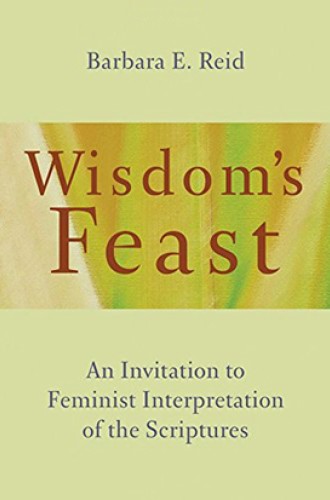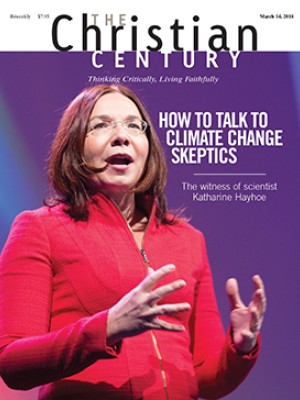Reading the Bible as a feminist
From creation to Mary Magdalene, Barbara E. Reid offers convincing alternatives to sexist interpretations of scripture.
What if I’d learned as a girl that my power did not have to be conferred on me by men? My early experiences with church didn’t help in this regard. Though I often heard messages of God’s love and acceptance, the only people in leadership in my church were male, God was consistently referred to with masculine pronouns, and the preaching consistently favored biblical men as the primary actors. In middle school, boys at church would tease me by quoting passages like “women should remain silent in the church” (1 Cor. 14:34). The deeper implications of this were clear: the Bible could easily be weaponized against people with bodies like mine. Yet, I wondered: Is there an alternative way to read these seemingly problematic texts?
Barbara E. Reid offers just such an alternative. Understanding that the Bible can either “reinforce sexism and violence toward women or [be] a powerful force for change,” Reid interprets a variety of biblical passages from a feminist perspective. Though she generally focuses on gender dynamics within the text, Reid’s understanding that feminism is “committed to the humanity, dignity, and equality of all persons” means she also attends to “inequalities based on race, culture, class, age, and ethnicity.”
Read our latest issue or browse back issues.
Reid proposes a seven-step method for feminist exegesis: (1) begin with women’s experience, (2) identify the interpreter’s social location, (3) ask who says, (4) evaluate what the text does, (5) unleash creative imagination, (6) remember and reconstruct, and (7) take action for transformative change.
Rather than tediously follow this formula, Reid weaves these elements into her writing. From Mary Magdalene to the creation story, she deconstructs problematic interpretations and posits convincing alternatives that depict women as equal and powerful participants. Her readings of scripture exemplify how deep intellectual work that incorporates responsible biblical exegesis can still be accessible.
For example, in a chapter titled “Mary Magdalene, Junia, and Other Apostles,” Reid argues that the Samaritan woman at the well (John 4) functions as an apostle and exemplary moral figure. Like the other apostles, the Samaritan woman converts many to believe in Jesus because of her testimony (4:39). Countering interpretations that regard the Samaritan woman as an immoral social outcast, Reid poignantly asks: “If she were such a pariah, how is it that her townsfolk so readily listened to her and believed her word?” Further, Reid observes that the Greek word often translated as “testimony” in this verse is logos, an overarching theme in the Gospel of John and a word used to refer to Jesus himself. Literarily, this word aligns the Samaritan woman with Jesus and positions her as a figure of truth and morality.
Reid argues against interpretations that regard the Samaritan woman as a sinner being healed. She points out that Jesus never addresses or refers to the woman as such. Unlike several other passages in John where Jesus instructs people explicitly to stop sinning (e.g., 5:14, 8:11), Jesus doesn’t even insinuate that the woman is a sinner.
To those who use the textual reference to her five husbands as evidence of her sinfulness, Reid argues that the husbands are very likely an allegory for the five false gods of the Assyrians that Samaria adopted when they were conquered (2 Kings 17:13–34). She keenly observes the wordplay on ba’al, which in Hebrew can mean both “husband” and “Lord” or “God.” She notes, “When Jesus affirms that the one she has now is not her ‘husband,’ he is saying that Samaria is not espoused to the God of Israel, as they should be.” In fact, rather than addressing the woman’s marital infidelity, the conversation immediately moves to the proper place for worship (a topic of debate between Jews and Samaritans), positioning the woman as Jesus’ theological dialogue partner.
Reid notes that some of the early church fathers, like Origen and Theophylact of Bulgaria, referred to the Samaritan woman not as a converted sinner but as an apostle, one anointed with the priesthood, and the “enlightened one.” If the Samaritan woman is read as a powerful, convincing, and moral figure, how does this change interpretations of the passage? Or as Reid asks at the end of the chapter, “What does the biblical record about women apostles say to you about ministry in the church today?”
While it wouldn’t have stopped scripture from being weaponized against me, exposure to biblical interpretations like Reid’s would have given me the language to refute it. Dismantling sexism within the church and creating a culture of advocacy for women is the work not only of academics and biblical scholars but also of people who interpret and live out biblical texts every day. Reid’s book is a generous invitation into just this kind of work.







